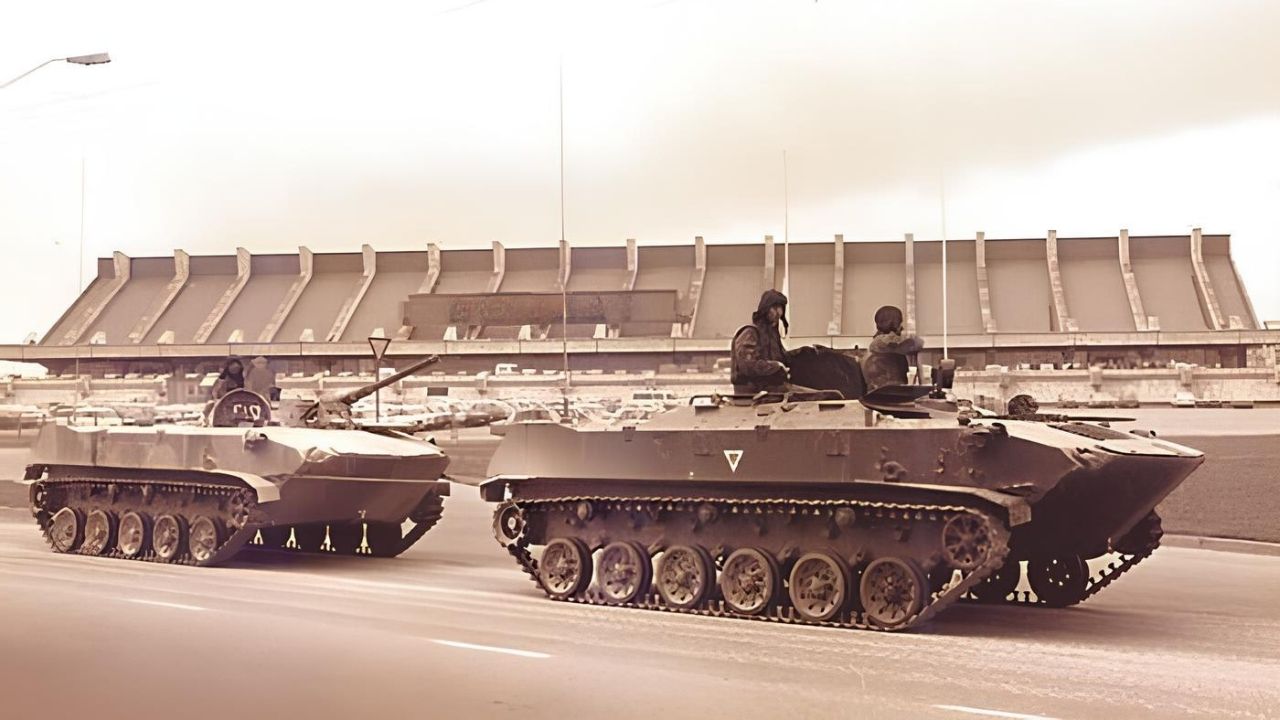
Did you know that Estonia, a small Baltic nation, faced a coup d'état attempt in 1924? This dramatic event, often overshadowed by larger historical moments, played a crucial role in shaping Estonia's future. The coup was orchestrated by the Communist Party of Estonia, aiming to overthrow the democratic government and establish a Soviet regime. Despite its failure, the attempt left a significant mark on the nation's history. In this blog post, we'll delve into 25 intriguing facts about the Estonian coup d'état attempt, shedding light on the key players, motivations, and aftermath. Buckle up for a fascinating journey through a pivotal moment in Estonia's past!
Key Takeaways:
- The Estonian coup d'état attempt in 1924 was a dramatic event involving a communist plot to overthrow the government, leading to fierce fighting and international attention.
- The failed coup had lasting effects, strengthening Estonia's democracy, shaping its politics, and serving as a symbol of resilience and determination.
The Estonian Coup d'État Attempt: An Overview
The Estonian coup d'état attempt is a significant event in the country's history. It involved political intrigue, military maneuvers, and international attention. Here are some fascinating facts about this dramatic episode.
Key Players and Events
Understanding the main figures and pivotal moments helps to grasp the complexity of the coup attempt.
- The coup attempt occurred in December 1924. This was a turbulent period in Estonia's early years of independence.
- The Communist Party of Estonia orchestrated the coup. They aimed to overthrow the democratic government and establish a Soviet regime.
- Jaan Anvelt led the coup attempt. A prominent communist, Anvelt was a key figure in the Estonian Bolshevik movement.
- The coup was planned with Soviet support. The Soviet Union provided logistical and financial backing to the Estonian communists.
- The coup began with an attack on the Tallinn military barracks. This strategic move aimed to seize control of the military forces.
The Day of the Coup
The events of the day were chaotic and filled with tension.
- The coup started early in the morning on December 1, 1924. The element of surprise was crucial for the conspirators.
- Rebels targeted key government buildings. They aimed to capture the Parliament, the Presidential Palace, and other vital locations.
- The Estonian government quickly responded. Loyal military and police forces mobilized to counter the coup attempt.
- Fierce fighting erupted in Tallinn. The capital city witnessed intense street battles between the rebels and government forces.
- The coup was suppressed within hours. By the end of the day, the government had regained control of the situation.
Aftermath and Consequences
The failed coup had significant repercussions for Estonia and its political landscape.
- Many rebels were arrested or killed. The government launched a crackdown on communist sympathizers.
- Jaan Anvelt fled to the Soviet Union. He continued his revolutionary activities from abroad.
- The Estonian government strengthened its security measures. New laws and policies were implemented to prevent future coup attempts.
- The coup attempt strained Estonia-Soviet relations. Diplomatic tensions between the two countries increased.
- Public support for the government grew. The swift suppression of the coup bolstered confidence in the democratic regime.
International Reactions
The coup attempt drew attention from around the world, influencing international perceptions of Estonia.
- Western countries condemned the coup. They viewed it as a threat to democracy in the region.
- The League of Nations supported Estonia. The international organization expressed solidarity with the Estonian government.
- Soviet Union denied involvement. Despite evidence, the Soviet government officially denied supporting the coup.
- The coup attempt highlighted the threat of communism. It underscored the dangers posed by communist movements in Europe.
- Estonia received international aid. Several countries provided assistance to help Estonia recover from the coup attempt.
Legacy of the Coup Attempt
The 1924 coup attempt left a lasting impact on Estonia's history and political development.
- The coup is a significant event in Estonian history. It is remembered as a pivotal moment in the country's struggle for independence.
- The event is commemorated annually. Estonia observes December 1 as a day of remembrance for those who defended democracy.
- The coup attempt influenced Estonian politics. It shaped the country's approach to security and governance.
- Historians continue to study the coup. The event remains a subject of academic research and debate.
- The coup attempt is a symbol of resilience. It represents Estonia's determination to maintain its independence and democratic values.
Final Thoughts on the Estonian Coup Attempt
The Estonian coup d'état attempt of 1924 remains a pivotal moment in the nation's history. It showcased the resilience of the Estonian people and their commitment to democracy. Despite the threat posed by the communists, the government and its supporters managed to thwart the coup, ensuring the country's independence. This event also highlighted the geopolitical tensions of the time, with external forces trying to influence Estonia's future. Understanding this historical episode provides valuable insights into the challenges faced by small nations in maintaining sovereignty. It also serves as a reminder of the importance of vigilance and unity in the face of external threats. As we reflect on these facts, it's clear that the courage and determination of the Estonian people played a crucial role in shaping their nation's destiny.
Frequently Asked Questions
Was this page helpful?
Our commitment to delivering trustworthy and engaging content is at the heart of what we do. Each fact on our site is contributed by real users like you, bringing a wealth of diverse insights and information. To ensure the highest standards of accuracy and reliability, our dedicated editors meticulously review each submission. This process guarantees that the facts we share are not only fascinating but also credible. Trust in our commitment to quality and authenticity as you explore and learn with us.
